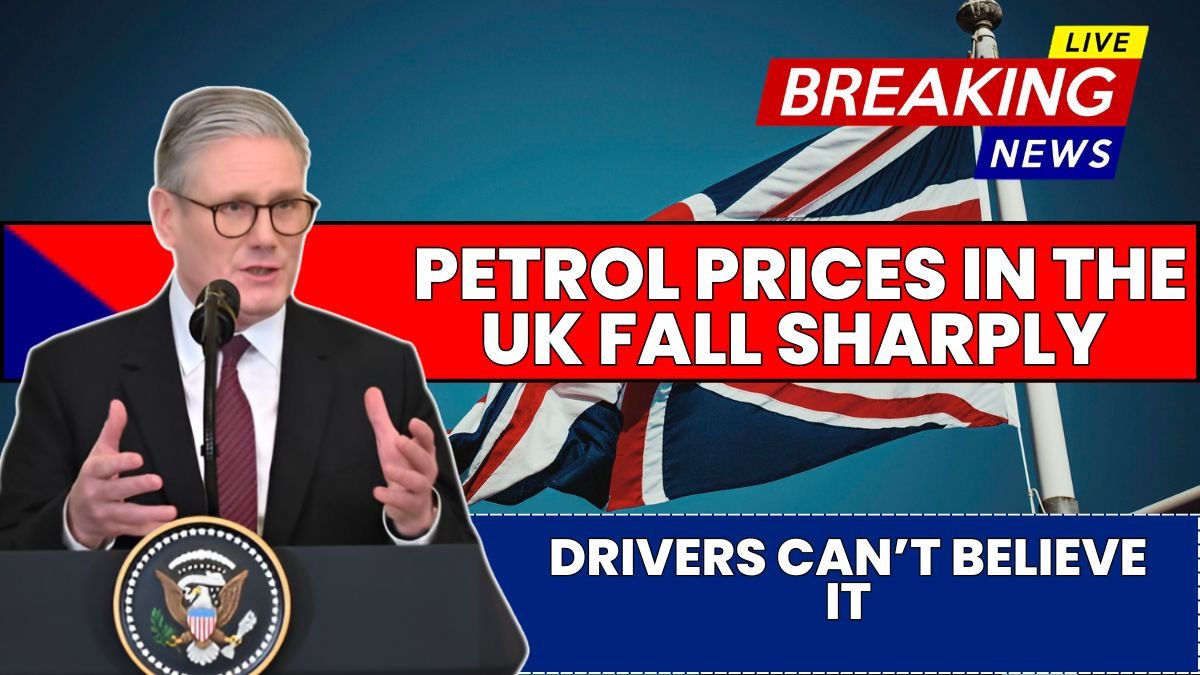Friends, the recent sharp fall in petrol prices in Britain has surprised the whole country. This news is no less than a gift for the people who have been living under rising inflation and constant pressure for months. Now drivers are paying much less than before while filling petrol at the pump. This unexpected fall has come at a time when weakness in the global oil market and the strength of the British pound have combined to bring down the cost of fuel.
In this article, we will know in detail why petrol prices fell, which areas made the biggest difference, how and where you can get the cheapest fuel, and what to expect next.
Why did petrol prices fall suddenly?
This sharp fall in petrol prices in the UK is mainly due to two major reasons –
- Fall in global crude oil prices – In recent weeks, the price of Brent crude has gone below US $ 70 per barrel. This reduced the cost of fuel internationally.
- Strength of British pound – Due to the increase in the value of the pound against the dollar, oil purchased from abroad became cheaper.
Due to these two factors, average pump prices in the UK have fallen by around 6 pence per litre compared to April 2025 – from 139 pence to 132–134 pence.
Latest average prices and regional differences
According to RAC Fuel Watch, the average petrol price in the UK in May 2025 was 132.3 pence per litre, the lowest since July 2021. The average price of diesel also fell to 138.4 pence.
- Cheapest region – Northern Ireland, where prices at supermarket pumps are as low as 126 pence per litre.
- Most expensive region – London and the South East, although prices have come down here too.
Regional competition, especially among supermarket chains, is helping to bring prices down further.
Main reasons for falling prices
- Global oversupply – Oil producing countries are producing more than demand, which has led to a drop in prices.
- Strong pound – A strong pound against the dollar means it’s cheaper to import oil.
Passing the benefits to customers for retailers – Supermarkets and pump owners are cutting prices to attract customers, especially in rural and suburban areas.
How much are drivers saving?
If you drive to work every day, you could currently save £3 to £5 a week.
- For long-distance or delivery drivers – the savings could reach £20–£30 a month.
- While this may seem small, it’s a big boost to a family budget in times of inflation.
Where can you find the cheapest petrol?
- Use fuel comparison apps – Apps such as PetrolPrices, Waze and RAC Fuel Watch show you the latest rates.
- Keep an eye on supermarket chains – Tesco, Asda and Morrisons often offer cheaper petrol than private pumps.
- Avoid motorway service stations – they charge 10–20 pence more per litre.
Expert opinion – what will happen next?
Analysts at AA and RAC believe this decline may stabilize in the next few weeks. But:
- If the pound weakens,
- or the oil producing countries (OPEC) reduce production,
- then prices may rise again.
- Some experts predict that prices may temporarily go below 130 pence, but it is not guaranteed that this will last for a long time.
Effect on household and inflation
The reduction in petrol prices does not only mean savings for drivers. It affects many other expenses:
- Delivery charges may be reduced
- The cost of public transport may decrease
- Transportation of food and essential goods may become cheaper
This is also expected to reduce inflation (CPI Inflation) a little, which is good news for families struggling with high energy costs and expensive home loans.
Government and political response
Chancellor Rachel Reeves welcomed the fall in petrol prices and described it as a “relief for working families”. Opposition parties have called on the government to reform the law to increase transparency in fuel prices.
Some MPs also called for a review of fuel duty, so that the public can get more relief from inflation pressure.
When was the last time there was such a big drop?
Such a big drop was seen during the 2020 Covid lockdown, when demand was almost gone and crude oil prices went below zero.
The situation is different today – this time the reason is a supply surplus and improving currency exchange rates, not a loss of demand.
Easy tips to save at the pump
- Fill up mid-week – prices are often lower on Tuesdays and Wednesdays.
- Take advantage of loyalty cards – Tesco Clubcard, Nectar and other schemes offer discounts or points.
- Maintain correct tyre pressure – this improves mileage and reduces fuel consumption.
- Do not keep the engine running unnecessarily – switch off the engine if stopped for more than 30 seconds.
Impact on business – from logistics to taxis
Low fuel prices are beneficial not only for car owners but also for:
- Delivery companies
- Taxi operators
- Rideshare platforms (Uber, Bolt).
Reducing their costs increases profits and the customer also benefits from lower fares or delivery charges.
Will there be further price fluctuations?
Yes, petrol prices are highly dependent on global events.
- Conflicts in oil producing regions,
- New OPEC policies,
- Changes in currency exchange rates –
- All these factors can make prices go up and down rapidly.
- Therefore, drivers are advised to always stay updated and keep a flexible budget
Conclusion:
The recent drop in petrol prices in the UK has brought a sigh of relief, but it may not be permanent. So, make the most of the low prices, refuel on time, and look for small ways to save. After all, small savings can add up to a big relief.
FAQs
Q1. Why have petrol prices suddenly dropped in the UK?
A. Petrol prices have fallen due to a drop in global oil prices (Brent crude below $70 per barrel) and a stronger British pound, which has made fuel imports cheaper.
Q2. How much have petrol prices fallen?
A. On average, petrol prices have dropped by around 6 pence per litre, from about 139p to 132–134p.
Q3. Which region in the UK has the cheapest petrol right now?
A. Northern Ireland currently offers the cheapest prices, with some supermarket stations selling petrol for under 126p per litre.
Q4. Which areas still have higher petrol prices?
A. London and the South East remain the most expensive, although they too have seen price reductions in recent weeks.
Q5. How much can an average driver save with this price drop?
A. Regular commuters can save around £3–£5 per week, while high-mileage drivers may save £20–£30 per month.


